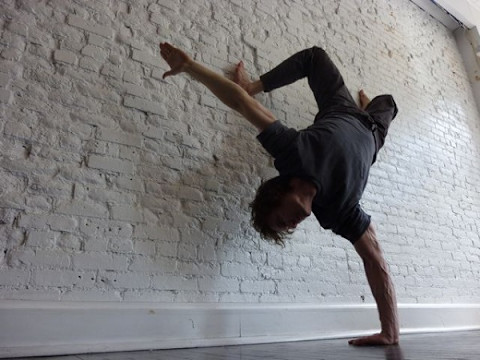
Injuries aren't part of yoga. Injuries are part of "not yoga." Yoga, just like life, is ours to create. It's ours to create yoga that's struggling, striving, pushing and forcing; a life that reinforces the strain and difficulty in our bodies and minds. It's also ours to create a yoga that is calm and peaceful. And a life that is capable and easy in any setting, under any challenge.
My wife Tara Stiles describes this well as "finding the ease in our effort." Far from lazy, it means we have creative choice, always. What we practice is what we live, as well as what we have to give. We can practice the hard way, and get very good at living the hard way, with furrowed brows, headaches, frustration. We can also practice easy, and create calmly inspiringly capable lives.
So why the warning about yoga in The New York Times? Why all the very real injuries with yoga practicers around the world -- even especially among those considered "advanced" practitioners? If I can injure my back, my wrists, my hamstrings, that's one thing. But here's something possibly even more disturbing: what if I injure my spirit? We're not a disjointed basket of parts; rather, we're all one whole connected being. My body doesn't simply reflect my mind; it's the same thing. Health and happiness are holistic. So if yoga can break my body, what else might it break?
Luckily, we get to choose. How we practice, how we live, is what we create. When we lose faith in our selves, this can get murky. We look to teachers, doctors, gurus, "advanced" yoga practicers -- anywhere but here -- to shift our direction outside of us. We may push and strive to meet expectations and images that come from somewhere else, and remain disconnected from ourselves. What we create may even look similar to what we want, but it doesn't grow easily or naturally from us. Injuries happen here, to every part of who we are.
A great example is in yoga. There is an idea that certain poses are "advanced." Alongside this goes a sense that duplicating an image of these poses, or what someone else looks like, is somehow better than wherever we are right now. But here's a new concept, that goes to the heart of this New York Times warning: there's no such thing as an advanced pose. As long as we're learning poses, we're all beginners. Otherwise, Cirque du Soleil performers would hands down be the world's most accomplished yogis.
What's easy in your body may take me lifetimes to handle. We all have our own shape and our own needs in each moment. We are entirely our own to discover, create, and re-create. Advancing in yoga has to do with increasing sensitivity to what we need to be healthy and happy, and cultivating the intuition and faith to respond effectively. This is true whether your yoga is in a classroom, running mountain trails, or raising a house full of kids. We're our own laboratory. We just need to jump in and create.
So if we'd like to trade struggle and injury for ease and calm capability, a good place to begin is moving away from the idea of advanced. Yoga isn't competitive posing. The "how" is far more important here than the "what." If a guru tells you to push harder to match what someone else looks like or does, find another guru. Better yet, find your self. A copy can never be so good as the original. Practice ease rather than force and in a nice roundabout way, all the poses -- even the ones called "advanced" -- become easy. More importantly, you'll have created something interesting: a healthy, happy, and inspiringly capable life that is entirely yours.
